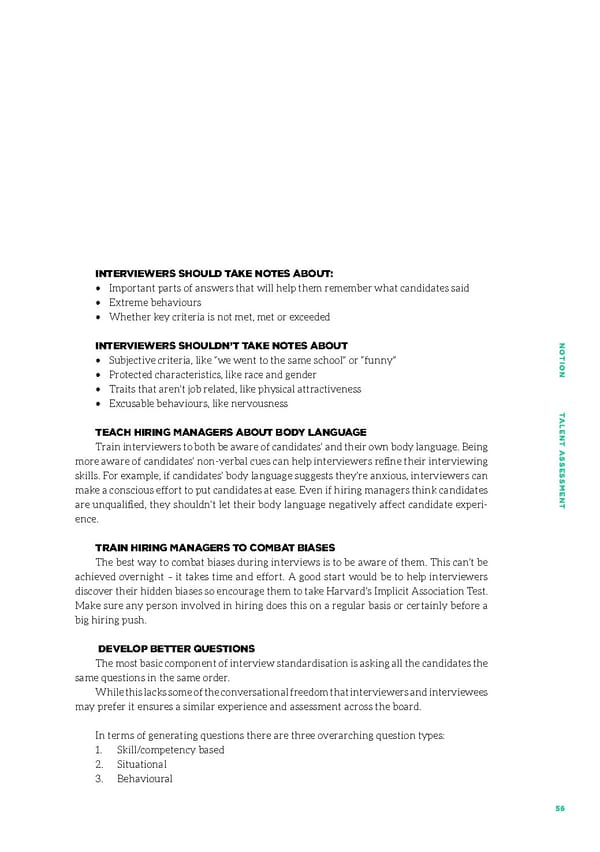INTERVIEWERS SHOULD TAKE NOTES ABOUT: • Important parts of answers that will help them remember what candidates said • Extreme behaviours • Whether key criteria is not met, met or exceeded INTERVIEWERS SHOULDN’T TAKE NOTES ABOUT NONO • Subjective criteria, like “we went to the same school” or “funny” TION TTION T • Protected characteristics, like race and gender • Traits that aren’t job related, like physical attractiveness • Excusable behaviours, like nervousness ALENT AALENT A TEACH HIRING MANAGERS ABOUT BODY LANGUAGE Train interviewers to both be aware of candidates’ and their own body language. Being SS more aware of candidates’ non-verbal cues can help interviewers refine their interviewing SESSES skills. For example, if candidates’ body language suggests they’re anxious, interviewers can make a conscious effort to put candidates at ease. Even if hiring managers think candidates SMENTSMENT are unqualified, they shouldn’t let their body language negatively affect candidate experi- ence. TRAIN HIRING MANAGERS TO COMBAT BIASES The best way to combat biases during interviews is to be aware of them. This can’t be achieved overnight – it takes time and effort. A good start would be to help interviewers discover their hidden biases so encourage them to take H arvard’s Implicit Association Test. Make sure any person involved in hiring does this on a regular basis or certainly before a big hiring push. DEVELOP BETTER QUESTIONS The most basic component of interview standardisation is asking all the candidates the same questions in the same order. While this lacks some of the conversational freedom that interviewers and interviewees may prefer it ensures a similar experience and assessment across the board. In terms of generating questions there are three overarching question types: 1. Skill/competency based 2. Situational 3. Behavioural 5656
 Talent Assessment for Growth Startups Page 52 Page 54
Talent Assessment for Growth Startups Page 52 Page 54